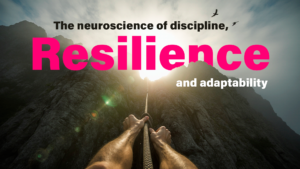
Neuroscience and the Stage: How Visual Attention Can Elevate Your Impact as a Speaker
In today’s fast-paced world—where ideas compete for just seconds of attention and live or virtual events are the norm—professional speakers face a dual challenge: capturing and maintaining audience focus while managing their own attention in complex environments. Neuroscience, once confined to labs and clinical settings, is now making its way onto the stage, offering crucial insights into mastering the art of public speaking.
A recent study published in Frontiers in Psychology (2022), titled Selective Visual Attention During Public Speaking in an Immersive Context, reveals critical data on how speakers manage their visual attention when addressing an audience. This article breaks down the findings and translates them into actionable tools for professionals who want to thrive as speakers in today’s communication landscape.
The Science of the Gaze: Where Do We Look When Speaking?
The study utilized virtual reality (VR) technology and eye-tracking to observe participants delivering either improvised or rehearsed speeches to a virtual audience. The results showed that visual attention during public speaking follows a deliberate, strategic pattern—far from random eye movement.
Speakers tend to focus their gaze on specific areas of the audience, a behavior that helps them better control the narrative, reduce anxiety, and establish emotional connection. However, high levels of performance anxiety disrupted these patterns, often leading to visual avoidance or erratic eye movement, which can undermine the speaker’s perceived confidence and authority.
This is highly relevant in professional contexts where non-verbal communication accounts for up to 93% of message impact. Where you look, how you move, and your facial expressions are subconsciously—but powerfully—interpreted by your audience. Mastering these elements is not a luxury—it’s essential for any speaker who wants to command attention and drive influence.
Implications in Today’s Professional Environment
Today’s speakers no longer present exclusively in physical auditoriums—they also engage audiences through Zoom, hybrid events, and tech-heavy formats. This demands a new kind of stage literacy: one rooted in neuroscience and human behavior.
1. Managing Audience Attention
Attention is one of the most scarce and valuable resources in the information age. The study shows that strategic visual focus can direct or amplify an audience’s attention. In business, leadership, or training environments, knowing where to look, when to pause, and how to visually scan your audience can turn a good presentation into a compelling one.
Practical tool: Mentally divide your audience into quadrants and make eye contact with each section in 10–15 second intervals. This creates a sense of inclusion and keeps your audience mentally engaged.
2. Emotional Self-Regulation
The study also highlights how anxiety interferes with visual control. In high-pressure professional settings, managing your internal state is essential to maintain your external performance.
Practical tool: Use a “dual focus” technique. Before stepping on stage, fix your eyes on a specific object (like an empty chair) and associate it with an intention—calm, presence, or connection. This visual anchor can help ground you during moments of stress.
3. Mastering Hybrid and Virtual Stages
One of the study’s most valuable contributions is its use of immersive environments. VR allowed researchers to simulate realistic speaking conditions and measure how a speaker’s visual behavior shifts based on setting.
In today’s remote-first world, knowing how to “perform” on camera—maintaining eye contact with the lens, using visible gestures, or limiting distractions—is a core neurocommunication skill.
Practical tool: Practice speaking on camera with delayed feedback. Record your sessions and review them with a critical eye for visual engagement and distractions. This conscious repetition fosters neural plasticity that improves control in live settings.
Applying Neuroscience as a Professional Speaker
Neuroscience doesn’t have to be overly technical or distant from daily practice. When understood and applied correctly, it becomes a powerful compass for anyone seeking to lead with their voice.
- Learn to read your audience’s visual behavior: Don’t just speak—observe. Where are their eyes going? Are they engaged, distracted, reactive?
- Use your visual focus as a leadership tool: Your gaze conveys confidence, empathy, or disconnect. Think of your focus as an emotional flashlight.
- Train with technology, not just theory: Use simulators, VR, recordings—even AR-based games—to build your attention resilience and performance presence.
Source
Presti, P., Malavasi, M., & De Stefani, E. (2022). Selective visual attention during public speaking in an immersive context. Frontiers in Psychology. https://www.ncbi.nlm.nih.gov/pmc/articles/PMC8993214/
Continue reading more articles: https://neurobusiness.us/blog/


